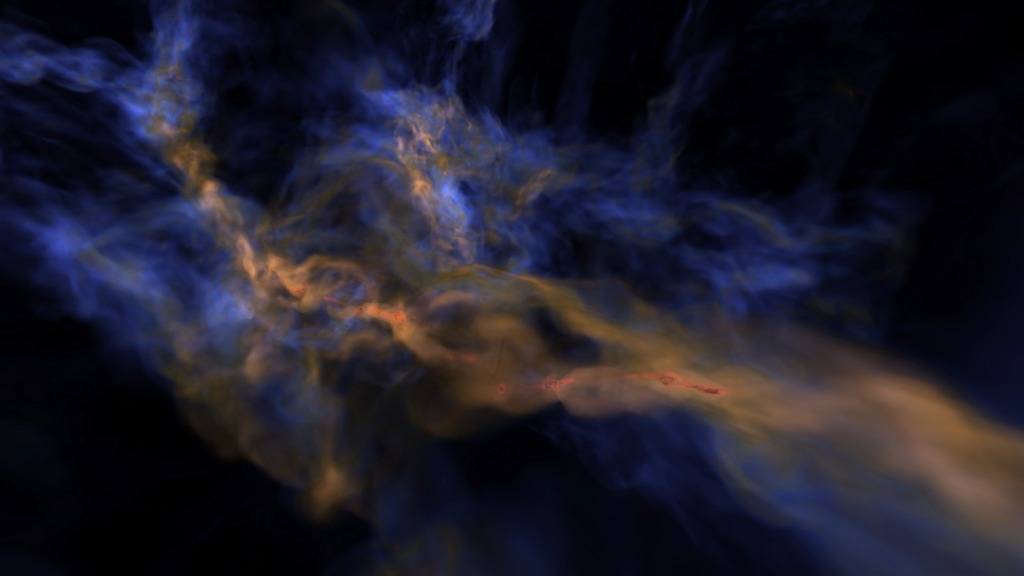Creating Gas Giants
Ancient civilizations observed Jupiter in the night sky, but humanity still doesn’t completely understand how it and other giant gas planets are born. One theory is that they began as rocky planets that slowly accumulated thick atmospheres and expanded into big gaseous bodies over millions of years. But there might be a faster route. Solar systems grow from protoplanetary disks, a large stew of primordial gases surrounding a massive solar seed called a protostar. Over thousands of years, the protostar’s gravity sucks in material from the disk’s outer reaches. As more gas swirls inward, it’s packed into dense spiral arms. While the protostar will eventually consume the gas closest to it, material farther away may spin off and condense into a Jupiter-like planet. Watch the video to see this process unfold.

Scientists are still researching—and debating—how large gaseous planets form.
This supercomputer simulation shows gas in a protoplanetary disk funneling into a protostar.

Dense regions of gas (bright areas) form extensive arms that circle the protostar (center).

The protostar feeds on gas, but some material is far enough away to escape its gravitational pull.

If a distant cloud of gas avoids fueling the protostar, its own gravity may cause it to coalesce into a gas giant.
Credits
Please give credit for this item to:
NASA's Goddard Space Flight Center
Cover image courtesy of ESO/L. Calçada
-
Animators
- Donna Cox (AVL NCSA/University of Illinois)
- Stuart Levy (AVL NCSA/University of Illinois)
- Matthew Hall (AVL NCSA/University of Illinois)
- Robert Patterson (AVL NCSA/University of Illinois)
- A. J. Christensen (AVL NCSA/University of Illinois)
- Alex Betts (AVL NCSA/University of Illinois)
-
Producers
- Michael McClare (HTSI)
- Donna Cox (AVL NCSA/University of Illinois)
-
Scientists
- Aaron C. Boley (University of Florida)
- Alexei Kritsuk (University of California, San Diego)
- Michael Norman (University of California, San Diego)
-
Writer
- Matt Davenport (USRA)
Release date
This page was originally published on Thursday, June 5, 2014.
This page was last updated on Wednesday, May 3, 2023 at 1:50 PM EDT.
